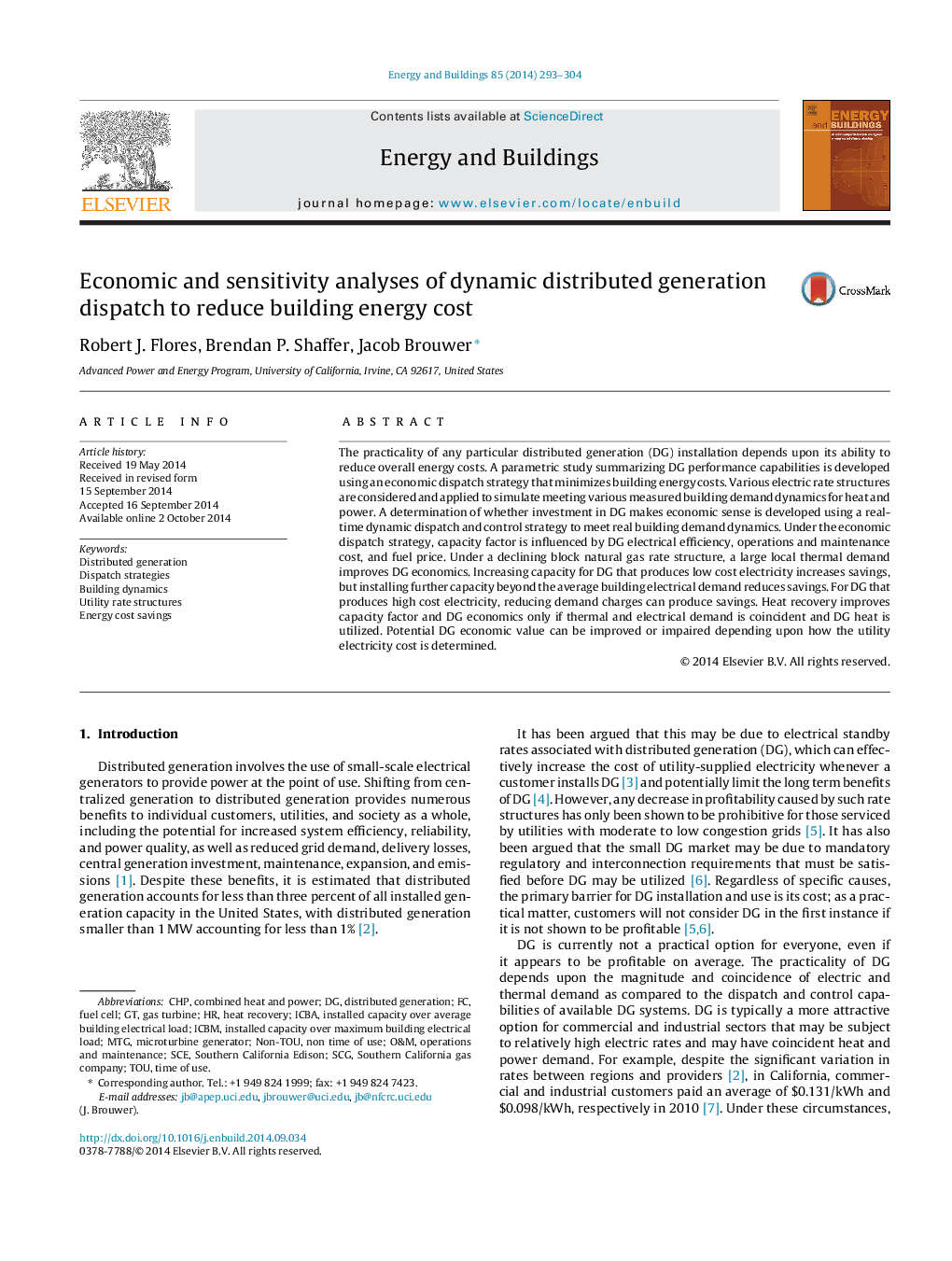| Article ID | Journal | Published Year | Pages | File Type |
|---|---|---|---|---|
| 6733164 | Energy and Buildings | 2014 | 12 Pages |
Abstract
The practicality of any particular distributed generation (DG) installation depends upon its ability to reduce overall energy costs. A parametric study summarizing DG performance capabilities is developed using an economic dispatch strategy that minimizes building energy costs. Various electric rate structures are considered and applied to simulate meeting various measured building demand dynamics for heat and power. A determination of whether investment in DG makes economic sense is developed using a real-time dynamic dispatch and control strategy to meet real building demand dynamics. Under the economic dispatch strategy, capacity factor is influenced by DG electrical efficiency, operations and maintenance cost, and fuel price. Under a declining block natural gas rate structure, a large local thermal demand improves DG economics. Increasing capacity for DG that produces low cost electricity increases savings, but installing further capacity beyond the average building electrical demand reduces savings. For DG that produces high cost electricity, reducing demand charges can produce savings. Heat recovery improves capacity factor and DG economics only if thermal and electrical demand is coincident and DG heat is utilized. Potential DG economic value can be improved or impaired depending upon how the utility electricity cost is determined.
Keywords
Related Topics
Physical Sciences and Engineering
Energy
Renewable Energy, Sustainability and the Environment
Authors
Robert J. Flores, Brendan P. Shaffer, Jacob Brouwer,
